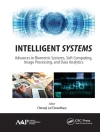MMS has evolved from the huge popularity of the SMS text service
for GSM networks. It is a departure from the transport mechanism
used for SMS (which is based on the GSM signalling channels) to the
use of IP to transport messages within the MMS network. To this end
MMS has similarities with Internet email and standard IETF
protocols. As with any new technology it is difficult to accurately
predict the position within the next 5 years, although based on
previous experience with WAP and SMS it would be fair to say that
these protocols will increase in usage over the next 5 years and
become legacy for a further 5 years following which, users will
migrate onto the next wave of messaging. Significant revenue growth
and data usage is expected to be driven by consumer usage of MMS.
But MMS technology offers more than just a broadening of message
content. With MMS, it is not only possible to send your multimedia
messages from one phone to another, but also from phone to email,
and vice versa. This feature dramatically increases the
possibilities of mobile communication, both for private and
corporate use.
Multimedia messaging will reshape the landscape of mobile
communication, making it more personal, more versatile, and more
expressive than ever before.
MMS:
* Is the first book to address how MMS (and the use of IP to
transport messages) will affect existing infrastructure and
business models
* Covers the fundamental changes to mail and billing systems
* Includes future recommendations, such as interoperability and
evolution
* Presents an overview of the MMS technology components
Drawing on the authors hands-on experience in the implementation
of MMS technology (developing, billing and delivering services) at
BT, this innovative book will appeal to engineering managers,
network operators, market analysts, business decision makers,
content providers and operator organizations.
Spis treści
About the Authors.
How This Book Is Organized.
Acknowledgements.
PART I: MOBILE MESSAGING BUSINESS CHALLENGES.
1. Multimedia Messaging Overview.
2. The Multimedia Messaging Value Chain.
PART II: THE TECHNOLOGIES OF MULTI MEDIA MESSAGING.
3. A Standards-based Approach.
4. Application Layer.
5. Network Layer.
PART III: MULTI MEDIA MESSAGING SERVICES TODAY AND TOMORROW.
6. Multimedia Messaging Services Today and Tomorrow.
7. Future Recommendations.
Table of Infrastructure, Content and Software Vendors.
Glossary.
Standards and Specifications.
Websites.
Industrial Fora, Regulatory Organizations and Other Relevant
Initiatives.
References.
Index.
O autorze
Daniel Ralph is an engineering manager at Btexact
Technologies, where he is responsible for a number of projects in
the mobile applications arena. He currently consults and
project-manages application development, application integration
and systems migration, and is also interested in the wider
commercial, social and political implications association with the
impact of knowledge society.
Daniel received his masters degree in Telecommunications
Engineering at University College London. He also holds a BSc(Hons)
in Computer Science from the Open University. He is a member of the
British Computer Society and is a chartered engineer. He has
authored a number of journal papers and presented at conferences on
the subject of delivering services via mobility portal and
technologies of the mobile internet.
Paul Graham is an engineering manager at e Serv Global,
where he is responsible for a number of projects associated with
the development of Intelligent Network Services and mobile
applications.
Paul received his master’s degree in Telecommunications
Technology at Aston University. He also holds a BEng in Electronics
from Southampton University. He is a member of the IEE and has vast
experience in the telecommunications industry, having served three
years at BT’s research facility at Martlesham Health (near
Ipswich), followed by five years working for G8 Labs/e Serv Global.
This includes periods working for Stratus, Ascend and Lucent
Technologies in the USA and throughout Europe. His current
interests include next-generation Internet services and mobile
services. He specializes in billing systems and data services.












